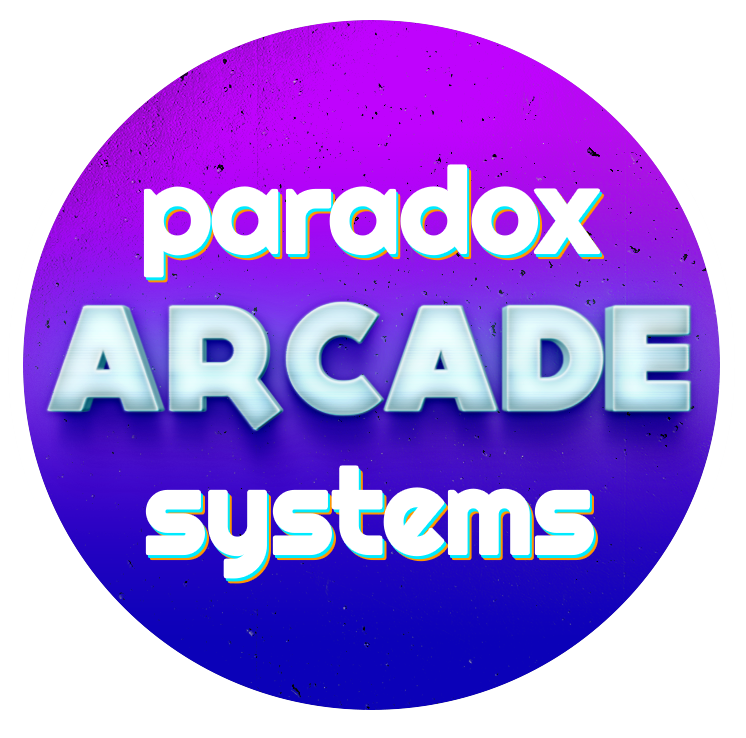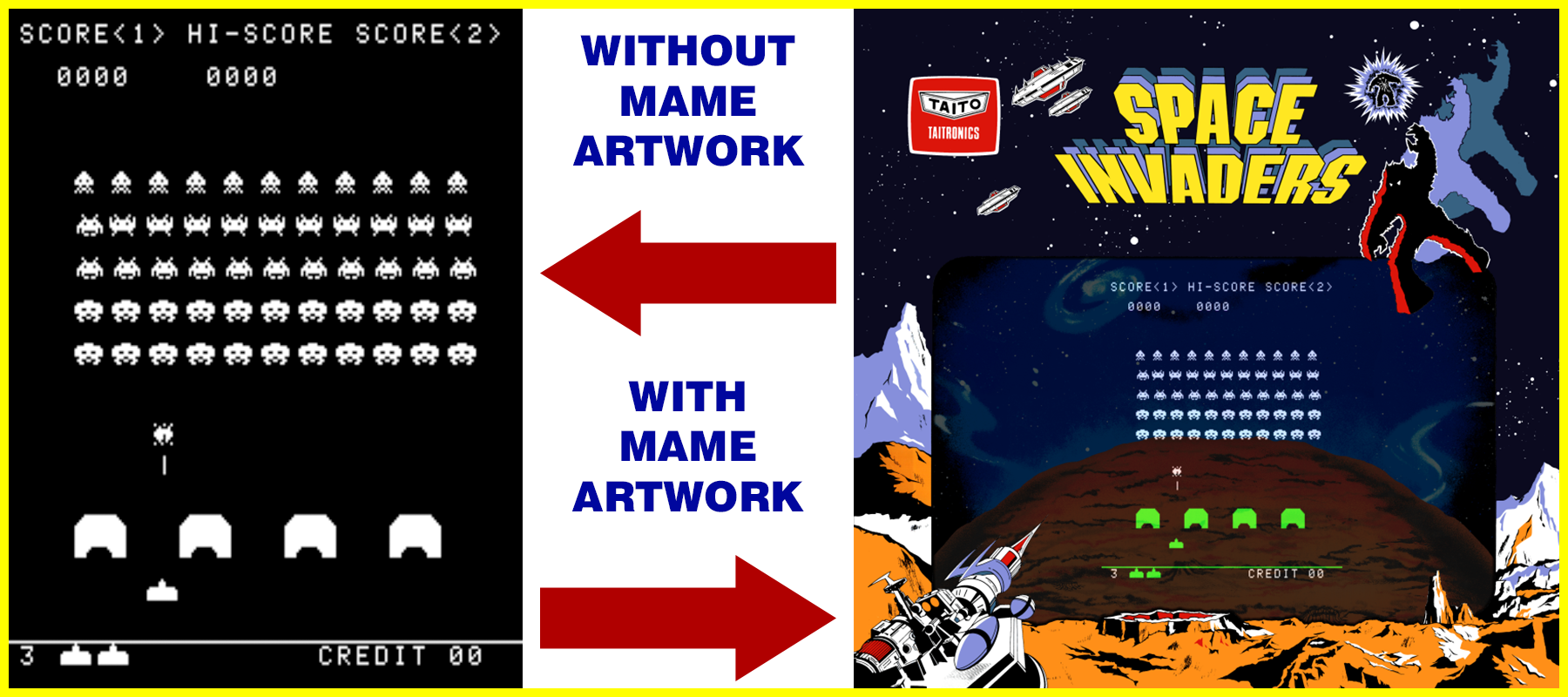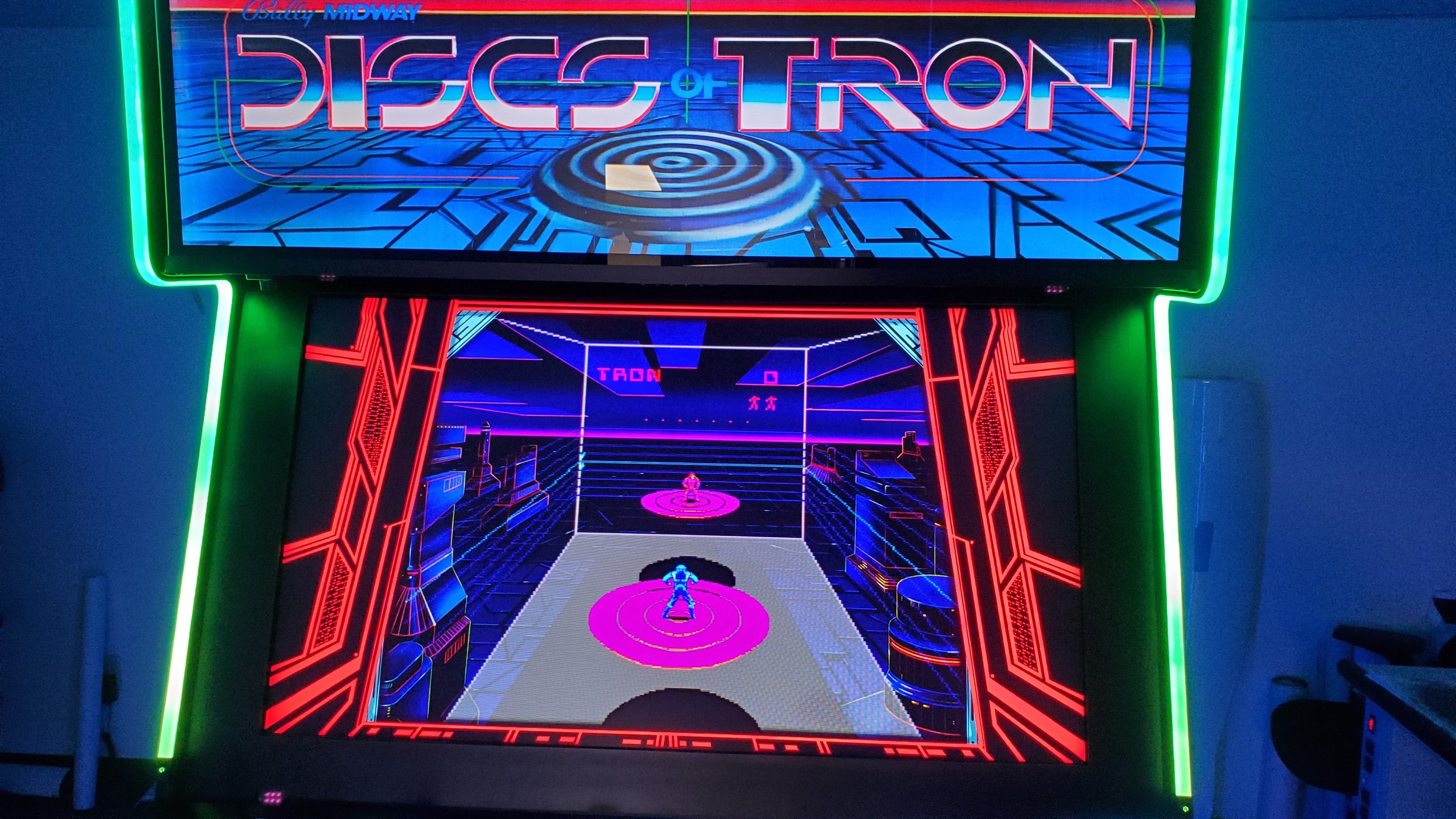Main MONITORS
STOCK: 1080p resolution, 60hz refresh rate
G-SYNC Upgrade: 4k resolution, 144hz refresh rate
43” Main Monitor: Colossus Cabinet
32 Main Monitor: Non-Colossus, Vector Racing, Guitar Hero, and Light Gun cabinets
Why a G-SYNC / Variable-Refresh LCD Matters for Authentic Arcade Gameplay
Many classic arcade games were never designed to run at a standard 60 Hz. Unique refresh rates such as 54.7 Hz, 57 Hz, 58.5 Hz, 61.5 Hz, and even 50 Hz were used. The G-sync upgrade can tap into these modes! These “odd” timings are part of the original hardware design, and they directly affect game speed, input feel, and visuals. CLICK HERE for a list of popular non-60hz games.
The “stock” LCD cannot reproduce those frequencies accurately because it forces everything into 60 Hz. That means certain games run slightly too fast or too slow, animations can look uneven, and scrolling can stutter because the display and the game aren’t in sync.
A G-SYNC (or FreeSync/VRR) monitor solves this problem. Instead of forcing a fixed refresh rate, it matches the screen’s refresh to the game’s exact timing in real-time, whether it’s 54.706 Hz or 61.523 Hz. The benefits are huge:
Perfect motion smoothness: no stutter, hitching, or frame pacing issues.
Accurate game speed: the game runs at the precise pace the original hardware.
Lower latency and better input feel: the display responds immediately to the game’s actual frame output.
From a setup standpoint it’s not just a matter of connecting a g-sync monitor and running the game. Each platform must be set in the backend to take advantage of this feature. We take care of this for you!
WHAT ABOUT WIDESCREEN?
Older games are cropped to their native 4:3 resolution with custom BEZELS filling the space around the gameplay. If you don’t mind stretching the image and filling the entire 16:9 widescreen monitor with the gameplay you can turn off the bezel.
Bezel ON
Bezel OFF
43” Monitor has a 34” 4:3 aspect crop when bezels are added. (Most older arcade games used a 19” - 25” 4:3 CRT monitor)
Bezel Examples
INSTRUCTION CARDS
Instruction Cards are images containing gameplay info, player moves, curiosity, hints, controller buttons, or anything else that you want to be displayed while you are playing the game, without the need to pause or stop your gameplay.
INSTRUCTION CARDS ARE COMPATIBLE WITH THE FOLLOWING SELECT GAMES
Altered Beast - altbeast
Alien Vs Predator - avsp
Captain America and The Avengers - captaven
Carrier Air Wing - cawing
Cadillacs and Dinosaurs - dino
Final Fight -ffight
Ghouls'n Ghosts - ghouls
Golden Axe - goldnaxe
Hyper Street Fighter II - hsf2
Knights of the Round - knights
Mercs - mercs
Mortal Kombat - mk
Mortal Kombat II - mk2
Mortal Kombat III - mk3
Marvel Super Heroes - msh
Marvel Super Heroes Vs. Street Fighter - mshvsf
Metal Slug - Super Vehicle-001 - mslug
Marvel Vs. Capcom: Clash of Super Heroes - mvsc
The Punisher - punisher
Pretty Soldier Sailor Moon - sailormn
Samurai Shodown / Samurai Spirits - samsho
Samurai Shodown III / Samurai Spirits - Zankurou Musouken - samsho3
Street Fighter - sf
Street Fighter II: The World Warrior - sf2
Street Fighter II': Champion Edition - sf2ce
Street Fighter II': Hyper Fighting - sf2hf
Street Fighter Alpha: Warriors' Dreams - sfa
Street Fighter Alpha 2 - sfa2
Street Fighter Alpha 3 - sfa3
Street Fighter III: New Generation - sfiii
Street Fighter III 2nd Impact: Giant Attack - sfiii2
Street Fighter III 3rd Strike: Fight for the Future - sfiii3
Super Street Fighter II: The New Challengers - ssf2
Ultimate Mortal Kombat 3 - umk3
U.N. Squadron - unsquad
X-Men Vs. Street Fighter - xmvsf
EXTRA ARTWORK
Some games emulate very plain graphics, but were enhanced on the original cabinets with printed materials. We have lots of these set up!
Discs of Tron with added scans of printed materials for the full experience.
CRT and SHADERS
Old arcade games used cathode ray tube technology or CRT. Old games look great on them but CRTs are large, heavy, prone to burn-in, and require skilled maintenance. The tradeoff in weight savings means we want to use shaders to restore the original look of old games and mimic a CRT screen. Restoring the softer look that was provided by the CRT technology, shaders offer things like scanlines, phosphor trails, shadowmask, and halation - all properties of CRTs that can be emulated using shaders.
Improved image on pixel art with our shader settings - click for closer look at details
Actual screen photo of CRT shader
Disable or modify shaders using THESE INSTRUCTIONS.
















